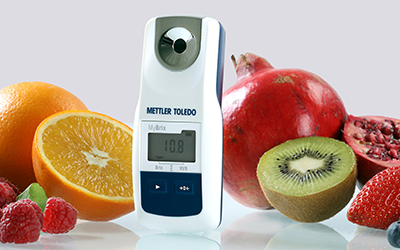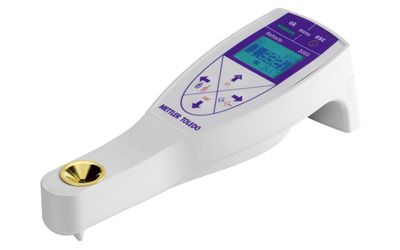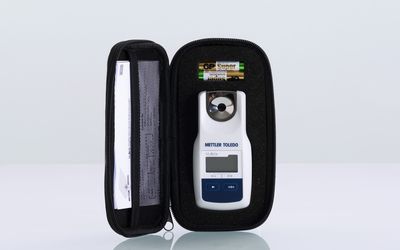
Hand Refractometer
Accuracy, Speed and Simplicity Are Our Strengths—Now They Can Be Yours with Our Digital Hand Refractometers
A hand refractometer is a portable, handheld device used to measure the refractive index of a substance. Our range of digital hand refractometers is compact and robust and capable of measuring the refractive index of almost any food or beverage sample within seconds. They are ergonomically designed to make operation as simple and convenient as possible; just place a few drops on the cell, press the button, and you will get the final result in the unit of your choice.
Advantages of METTLER TOLEDO's Digital Hand Refractometer
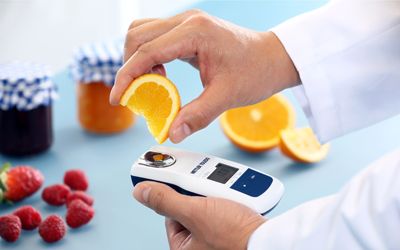
Ready for All Samples
Our refractometers master a wide variety of applications, including refractive index, Brix, and other sugar content or concentrations.
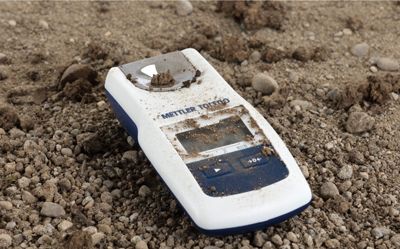
Measure Anywhere
Engineered with high-quality components to ensure a long lifespan, our digital handheld refractometers can withstand harsh environments on the go, in the production area, or in a quality control lab.
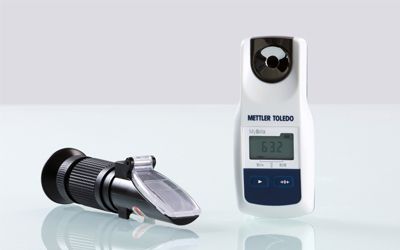
Say Farewell to Your Analog Refractometer
Compared with analog refractometers, digital refractometers provide more reliable results, eliminate operator dependency, and assist in detecting errors.
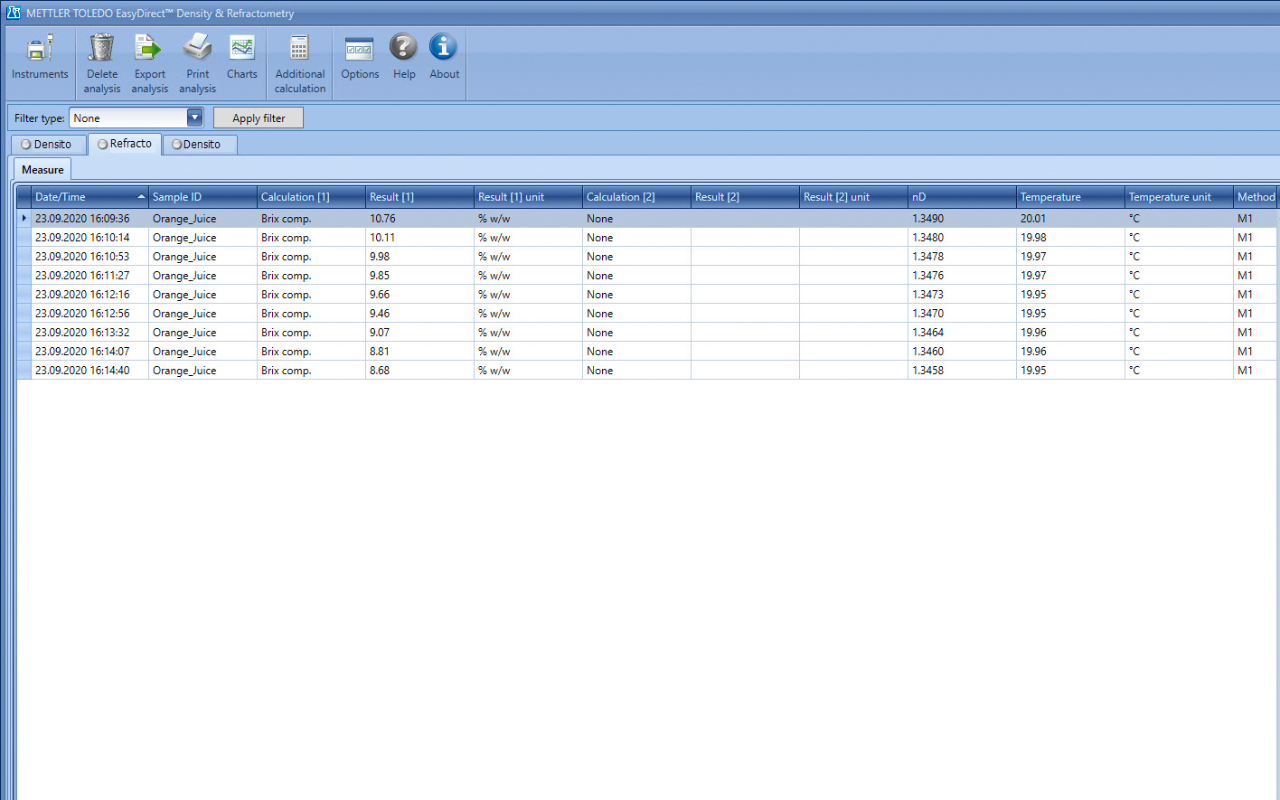
Advanced Data Storage
The handheld digital refractometer line, Refracto, stores up to 1,100 results and connects to EasyDirect PC software for enhanced data viewing.
Explore Our Services - Tailored to Fit Your Equipment
We support and service your measurement equipment through its entire life-cycle, from installation to preventive maintenance and calibration to equipment repair.
Support & Repair

Training & Consulting

- Automotive Refractometers
- Cooling Lubricant Hand Refractometers
- Digital Coolant Refractometers
- Digital Handheld Refractometers
- Digital Refractometers
- Oechsle Scale Refractometers
- Pharmaceutical Laboratory Refractometers
- Plato Refractometers
- Pocket Refractometers
- Portable Refractometers for Milk
- Refractive Index Device
- Refractometers for Antifreeze
- Refractometers for Beer
- Refractometers for Coffee
- Refractometers for Edible Oils and Fats
- Refractometers for Fruit
- Refractometers for Glycol Analysis
- Refractometers for Honey
- Refractometers for Sugar
- Refractometers for the Laboratory
- Refractometers for Urine
- Refractometers for Wine
- Standard EasyPlus Refractometers
- Wort Refractometers
FAQs
How do you use a hand refractometer?
Using a digital hand refractometer is as simple as ever. Almost anyone can use one by following these three simple steps.
Firstly, make sure the prism is clean. Secondly, add a few drops of sample to the prism—approximately 0.3 ml—ensuring the prism is well covered with sample. Finally, press the read button to begin measuring. You'll receive the results in just two seconds.
All results are automatically temperature compensated and converted into up to three of the 10 integrated sugar-related scales, including Brix, Oechsle, Baumé, and many more. You can easily toggle through these on the device until you find the number that represents your desired scale.
What is the function of a hand refractometer?
A hand refractometer is used to measure the refractive index, Brix, or other concentrations of liquid, viscous, and even pasty samples. It works by measuring the amount that light is bent refracted when it passes from the air into a sample.
A hand refractometer is primarily used for quality control and production purposes, such as determining the purity of substances. In the food and beverage industry, for example, a hand refractometer can be used to measure the sugar content (Brix) of fruit juices and concentrates, carbonated beverages, jams, confectionaries, and much more. Winemakers, however, rely on hand refractometers to measure the Oechsle of grape must in vineyards to determine the optimal harvesting time during winemaking.
In the chemical industry, hand refractometers are used to verify the concentration value of acids, bases, or the presence of organic solvents in inorganic salt (% w/w or v/v). Meanwhile, in the pharmaceutical industry, they are typically used for controlling the purity and concentration of raw materials, semi-finished products, and end products.
What does a temperature-compensated hand refractometer do?
A temperature-compensated hand refractometer measures the refractive index of samples at their ambient temperature. The built-in algorithms then compensate the result to a desired temperature (e.g. 20°C).
The temperature of the sample has a major influence on the measurement process. Hence, a digital hand refractometer delivers more consistent results than a manual optical refractometer and relieves the user of performing calculations to account for any temperature changes.
All of our digital hand refractometers deliver results that are automatically temperature compensated and converted into up to 3 of the 10 integrated sugar-related scales, including Brix, Oechsle, °Baumé and many more.
